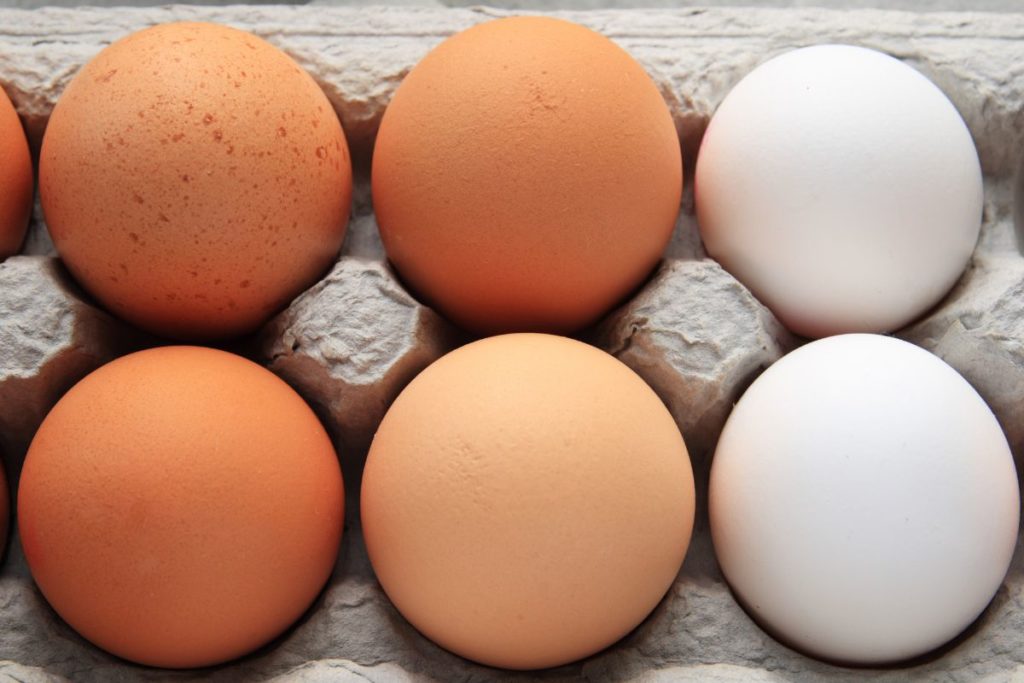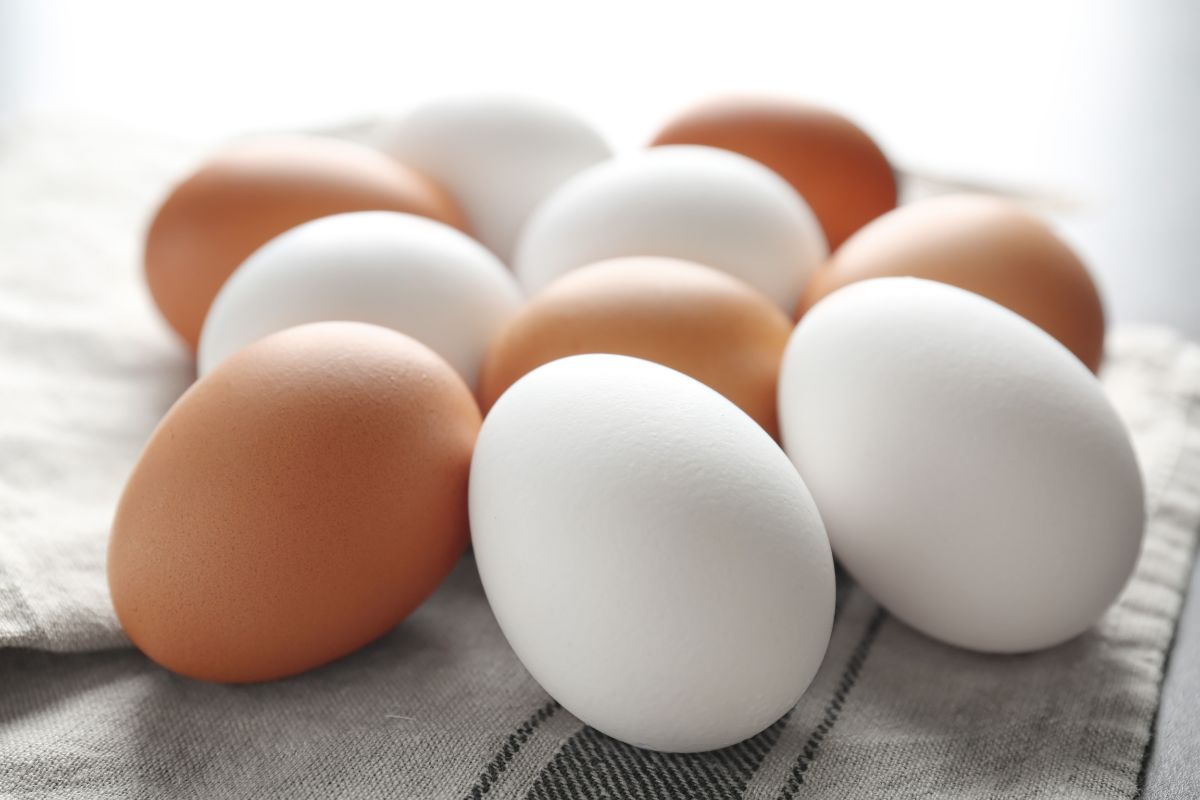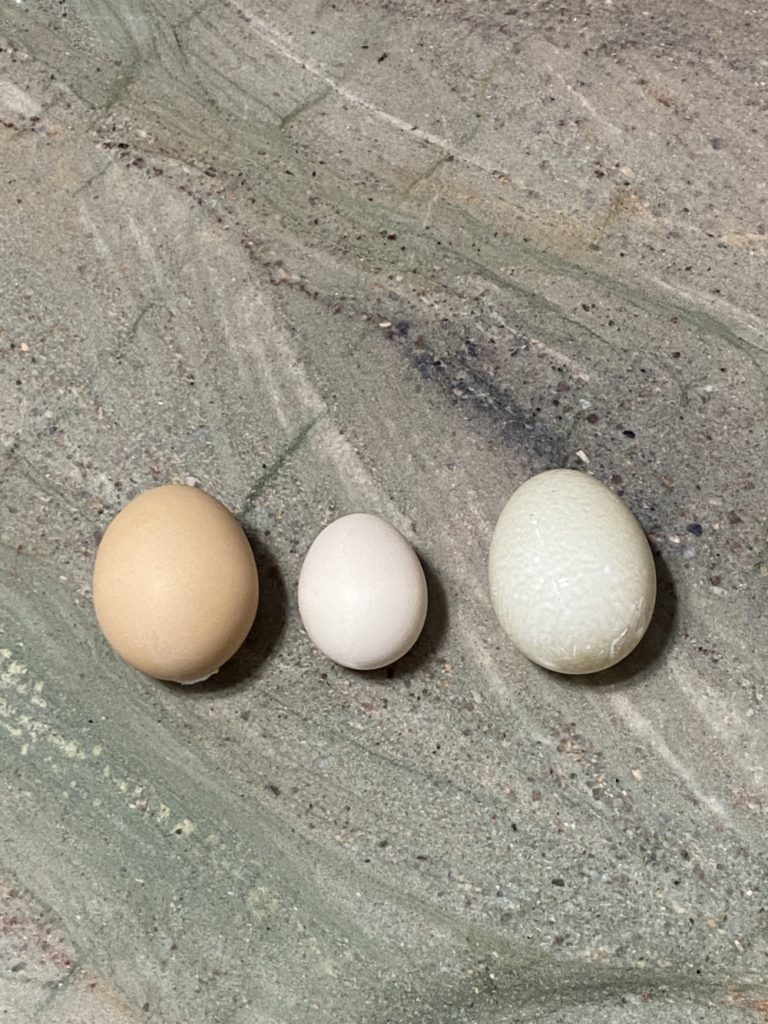Brown Eggs vs White Eggs: What’s the Difference?
When you go to the grocery store, you’re often faced with a variety of choices in the egg section. Once you’ve decided between duck eggs or chicken eggs, you’ll have more questions. Not only do eggs come in different sizes, but they also come in different colors! But what is the difference between brown eggs and white eggs?
Below, we’ll share some more information about the differences between white eggs and brown eggs so you can make a more informed decision the next time you go grocery shopping. To learn more, read on!
Why Use Eggs?
There are lots of reasons why people use eggs. Eggs are versatile, nutritious, and widely consumed worldwide. Lots of people enjoy them as they are an excellent source of protein, vitamins, and minerals, and are fairly inexpensive and easy to prepare. They are also gentle on the stomach for some people who are sick or on specific diets, like keto.
Plus, eggs are a good source of choline, which is important for brain health and development, as well as lutein and zeaxanthin, which can help reduce the risk of developing age-related eye diseases. Because they are so versatile, eggs are a staple ingredient in many traditional dishes and cuisines worldwide.
What Makes Some Eggs Brown?
So what makes some eggs brown anyway? Ultimately, egg color is determined by your chicken’s genetics. Some chickens lay white eggs while others lay brown eggs. In fact, some chickens, nicknamed the Easter Egg Chicken, can lay pink, blue, and green eggs!
The brown color itself is caused by protoporphyrin IX, a pigment that is put on the eggs while it is being made inside the chicken. Only some chickens have protoporphyrin IX, while others don’t. Those that don’t lay white eggs.
While there hasn’t been a fully identified purpose for protoporphyrin IX, some claim that this extra layer adds thickness to the shell of brown eggs. This extra layer could potentially keep bacteria out easier than white eggs, which would make brown eggs safer than white eggs. An extra layer could also keep them fresher longer, though this has not been proven at this time.
Chickens That Lay White Eggs
There are many chicken breeds that lay white eggs. White Leghorns are the most common white egg-laying backyard chicken, but Ancona and Polish chickens also lay a large number of white eggs. Other chicken breeds that lay white eggs include:
- Andalusians
- Egyptian Fayoumis
- Hamburgs
- California Whites
- Holland
Each of these breeds can easily be found at your local farm supply store when they get chicks in. For adult chickens, reach out to your local farm as they may have some for sale. County fairs are also a great place to keep an eye out for chickens for sale.
Keep in mind that some chicken breeds don’t get along with one another, so you should only get breeds that get along in the same coop. Ideally, your chickens should all be similar in size and have similar feather patterns to prevent bullying between your chickens.
For example, Polish chickens have lots of feathers on their heads, which may be pecked and plucked by chickens without these feathers. This can result in your Polish chickens becoming injured in a variety of ways including skin infections and even brain damage.
Chickens That Lay Brown Eggs
There are also many chicken breeds that lay brown eggs. Some of the most common brown egg-laying chicken breeds include:
- Black Australorps
- Rhode Island Reds
- New Hampshires
- Buff Orpingtons
- Barred Plymouth Rocks
- White Plymouth Rocks
- Welsummers
- Barnevelder
- Golden Comets
Lots of these brown egg-laying chicken breeds are quite large, so keep that in mind when you go to build your coop. You can also raise a combination of white egg-laying and brown egg-laying chickens for a variety of egg types, as many chicken breeds do get along.
Similarities Between Brown and White Eggs
Brown and white eggs are actually quite similar to one another. Both have shells, yolks, and whites, and both can be cooked in various recipes requiring chicken eggs. They also come in a variety of sizes including Medium, Large, and Jumbo.
White and brown eggs are nutritionally identical, though some people claim they can taste the difference between brown and white eggs in their cooking. However, this may be a result of differences in chicken feed rather than between brown and white eggs. From a scientific point, the inside of both white and brown chicken eggs are the same.

Differences Between Brown and White Eggs
Color
There are few differences between brown and white eggs besides their color. Brown eggs are coated in protoporphyrin IX, a pigment produced by brown egg-laying chicken breeds. This pigment gives them their rich brown color.
Size of the Eggs
In addition to color differences, brown eggs are often larger than white eggs since larger chickens lay them. However, you can still get large white eggs from breeds such as White Leghorns. Brown chicken eggs are also sometimes described as having a thicker shell than white eggs, which may be a result of the protoporphyrin IX layer.
Since brown chicken eggs have a layer of protoporphyrin IX on them, some people believe that this further protects the inside of the egg from bacteria. This could also help preserve the egg longer, keeping it more nutritious over time.
Taste and Texture
Brown eggs are sometimes described as richer in flavor due to their yolk, but this varies by person. Scientifically speaking, there is no nutritional difference between white and brown eggs. However, some brown egg-laying chickens are fed different diets from white egg-laying chickens due to their breed and size, which can certainly contribute to overall egg quality.
Though there aren’t many differences between white and brown chicken eggs, some people still have a distinct preference. Your chickens’ eggs may be slightly different in quality depending on the type of feed you give them, whether they lay brown eggs, white eggs, or even green eggs.
The next time you go to the store, don’t be afraid to try both brown and white eggs and compare the two. Perhaps you’ll find a preference for flavor alone!







